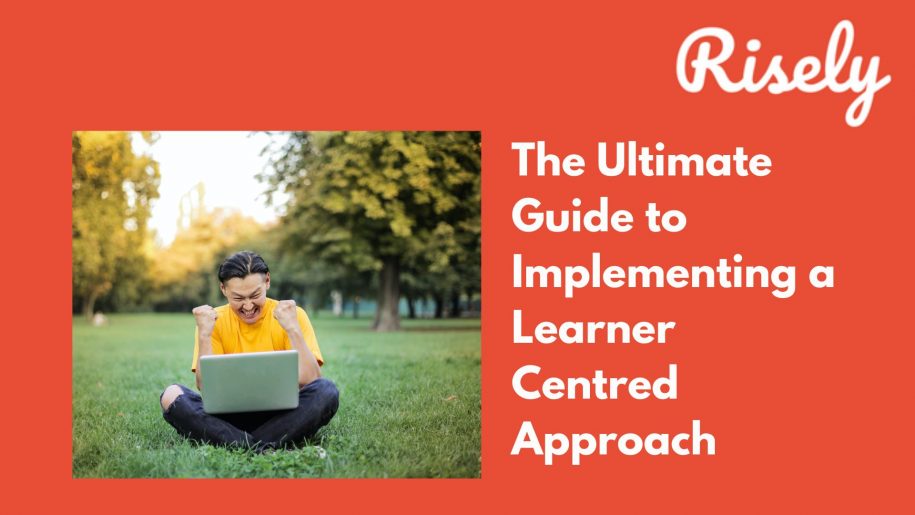The Ultimate Guide to Implementing a Learner Centred Approach
In the dynamic setup of education, traditional teaching methods are increasingly giving way to learner centred approaches that prioritize students’ individual needs and aspirations. The learner centred approach represents a shift from passive absorption of information to active engagement, collaboration, and personalized learning experiences. It places the learner at the heart of the educational journey, empowering them to take ownership of their learning and become lifelong seekers of knowledge. Gone are the days when lectures, rote memorization, and standardized assessments dominated classrooms. Today, educators recognize the importance of nurturing critical thinking, problem-solving skills, and adaptability in students to thrive in a rapidly changing world. This realization has spurred the adoption of learner-centered approaches, where students are active participants, co-creators of knowledge, and partners in their educational journey. In this blog, we will discuss the principles and benefits of the learner centred approach. We will explore specific strategies and innovative classroom practices that highlight the transformative impact of placing learners at the center of their educational journey.What is learner centred approach?
A learner centred approach, also known as a student-centered approach or learner-centered education, is an instructional philosophy that places the learner at the center of the educational process. It emphasizes active participation, engagement, and autonomy on the part of the learner, shifting the focus from the teacher as the sole provider of knowledge to the learner as an active participant in their learning journey. In a learner centred approach, the educator acts as a facilitator or guide rather than a lecturer. The approach recognizes that learners come with diverse backgrounds, interests, and learning styles and seeks to accommodate and respond to their needs. It promotes personalized learning experiences and encourages students to take ownership of their learning by effective goal setting, making decisions, and reflecting on their progress.Importance of learner centred approach
The learner centred approach holds significant importance in education for several reasons:- Increased motivation: When learners are actively involved in learning, their motivation levels tend to be higher. By incorporating their interests, providing choices, and allowing them to take ownership of their learning, the learner centred approach promotes intrinsic motivation, leading to a deeper commitment to learning.
- Individualized learning: Learners have diverse needs, abilities, and learning styles. This approach recognizes these differences and tailors instruction to accommodate individual learners. Addressing their strengths, weaknesses, and interests promotes personalized learning experiences that can enhance comprehension and retention.
- Promotes deeper understanding: Learner-centered instruction emphasizes understanding and comprehension rather than rote memorization. Allowing learners to explore concepts, connect new information to prior knowledge, and apply their learning to real-world situations promotes deeper understanding and long-term retention of knowledge.
- Enhances problem-solving and decision-making abilities: Learner-centered approaches often involve problem-solving tasks and decision-making opportunities. Students learn to analyze situations, consider multiple perspectives, and make informed choices. These skills are essential for success in various aspects of life, including careers, relationships, and personal growth.
- Collaboration and interaction: Learner-centered approaches foster collaboration and interaction among students. Students work in groups, discuss, and participate in cooperative learning activities. Collaborative learning enhances social skills, communication skills, and the ability to work effectively in teams.

Characteristics of learner centred approach
The learner centred approach is characterized by several key features that distinguish it from traditional teacher-centered methods. Some common characteristics of a learner centred approach:- Active engagement: Learner-centered education emphasizes active participation and engagement of students in the learning process. Students are encouraged to ask questions, explore topics of interest, and contribute to discussions and activities. They take an active role in constructing their knowledge and understanding.
- Student autonomy: Learner-centered approaches promote student autonomy and independence. Students are given opportunities to make choices, set goals, and take ownership of their learning. They have a say in how they learn, what they learn, and how they demonstrate their understanding.
- Personalized learning: Learner-centered education recognizes and accommodates individual learners’ diverse needs, interests, and abilities. Instruction is tailored to meet student’s specific needs, considering their prior knowledge, learning styles, and strengths. Differentiated instruction and flexible learning pathways are often used to support personalized learning experiences.
- Reflective practice: Learner-centered approaches encourage students to reflect on their learning process and progress. They are given opportunities for self-assessment, self-reflection, and self-evaluation. Reflection helps students develop metacognitive skills and become aware of their strengths, weaknesses, and areas for improvement.
- Flexible assessment: Learner-centered education utilizes a variety of assessment methods that go beyond traditional tests and exams. Assessments are designed to measure the acquisition of knowledge and the development of skills, understanding, and application of concepts. Formative assessments, projects, and presentations often provide a more comprehensive and authentic evaluation of student learning.
- Teacher as facilitator: In a learner centred approach, the teacher assumes the role of a facilitator or guide rather than a lecturer. The teacher creates a supportive learning environment, provides guidance and resources, and facilitates student learning experiences. The focus is on scaffolding students’ learning and helping them develop the necessary skills and knowledge.
Other Interesting Reads
How to adopt learner centred approach?
Adopting a learner centred approach requires a shift in instructional practices and a focus on student engagement, empowerment, and personalization. Some steps you can take to adopt a learner centred approach:- Understand your students: Get to know your students individually. Learn about their interests, strengths, learning styles, and goals. This will help you tailor your instruction to meet their specific needs.
- Promote active engagement: Design learning experiences that actively engage employees. Encourage them to participate in discussions, ask questions, and contribute ideas. Incorporate hands-on activities, group work, and real-world applications to make learning more meaningful and engaging.
- Provide choices and autonomy: Offer students choices in their learning. Allow them to select topics of interest, decide on project formats, or choose from various assignments. Foster a sense of autonomy by involving students in decision-making and allowing them to take ownership of their learning process.
- Personalized instruction: Differentiate instruction to accommodate diverse learners. Provide varying levels of challenge, support, and resources based on student needs. Use various instructional strategies, materials, and assessments to cater to different learning styles and preferences.
- Incorporate reflection: Integrate regular opportunities for students to reflect on their learning progress. Encourage self-assessment and self-reflection to promote metacognitive skills. Provide feedback that supports students in understanding their strengths and areas for improvement.
- Embrace technology and resources: Utilize technology and various resources to enhance student learning. Incorporate digital tools, online resources, and multimedia to provide students diverse learning opportunities and facilitate self-paced learning.
- Be a facilitator: Shift your role from being the sole provider of knowledge to a facilitator and guide. Support students’ learning journeys by providing guidance, structure, and feedback. Create a supportive and safe learning environment where students feel comfortable taking risks and seeking help when needed.
- Continuously reflect and adapt: Regularly reflect on your instructional practices and adjust based on student feedback and needs. Stay open to new ideas, research, and professional development opportunities that can further enhance your learner centred approach.
Conclusion
The learner centred approach represents a paradigm shift in education, acknowledging individual students’ unique needs, interests, and aspirations. By placing learners at the heart of the educational experience, this approach empowers students to take ownership of their learning, fosters their intellectual curiosity, and equips them with the skills necessary to navigate an ever-changing world. Throughout this blog, we have explored the fundamental concepts and benefits of the learner centred approach. By adopting learner-centered practices, educators create dynamic and inclusive learning environments where students actively participate in their education. The learner centred approach also cultivates essential 21st-century skills such as collaboration, communication, and adaptability. Students learn to work effectively in teams, respect diverse perspectives, and navigate challenges collaboratively. These skills are invaluable in preparing students for future careers and equipping them to contribute meaningfully to society.Unlock your potential in a learner-centred approach by improving problem-solving skills.
Get started on your path to success today with a free problem-solving assessment.
Frequently asked questions
What is learner centred approach, and why it is important?
A learner centred approach in education is an instructional method that prioritizes individual learners’ needs, interests, and aspirations. It shifts the focus from the teacher as the central figure to the learner, empowering them to actively participate in their learning process.
The learner centred approach is important because it:
1. Enhances learning outcomes and student achievement.
2. Increases motivation and engagement.
3. Accommodates diverse learning needs and styles.
4. Promotes collaboration and teamwork.
The learner centred approach is important because it:
1. Enhances learning outcomes and student achievement.
2. Increases motivation and engagement.
3. Accommodates diverse learning needs and styles.
4. Promotes collaboration and teamwork.
What are the characteristics of a learner-centered approach?
The characteristics of a learner-centered approach include:
1. Active engagement of students in the learning process.
2. Personalized instruction and individualized support.
3. Emphasis on critical thinking, problem-solving, and inquiry
1. Active engagement of students in the learning process.
2. Personalized instruction and individualized support.
3. Emphasis on critical thinking, problem-solving, and inquiry
What is the main point of learner-centered teaching?
The main point of learner-centered teaching is to shift the focus from the teacher to the learner, placing them at the center of the educational experience. It aims to empower students by involving them actively in their learning, catering to their individual needs, fostering critical thinking and collaboration, and promoting lifelong learning skills.
Other Related Blogs
Performance Management Training: Empowering Managers To Manage Better
Performance Management Training: Empowering Managers To Manage Better Remember that feeling of dread when you knew performance review season was rolling around? Yeah, us, too. For many employees, performance reviews…
Confused by L&D Metrics? Here’s How to Focus on What Matters
Confused by L&D Metrics? Here’s How to Focus on What Matters You’ve undoubtedly witnessed companies celebrating a record number of employees completing leadership training programs. Champagne toasts erupt, press releases…
Leading Beyond Lines: Dhun Chhokar’s Journey from Design to Management
Leading Beyond Lines: Dhun Chhokar’s Journey from Design to Management Remember the time when you were jittery and nervous about your career and were seeking advice from everyone? We’ve all…
Boost Your Confidence and Communication: Top 4 Assertiveness Training Activities
Boost Your Confidence and Communication: Top 4 Assertiveness Training Activities It’s Tuesday morning, and you’re meeting with your team. A colleague proposes an approach you disagree with but hesitates to…


